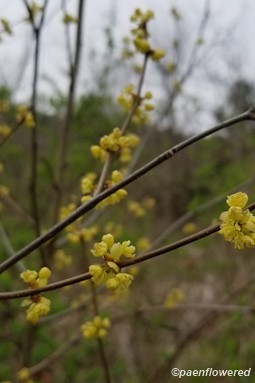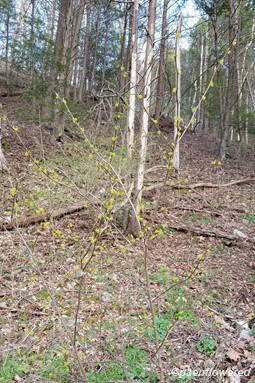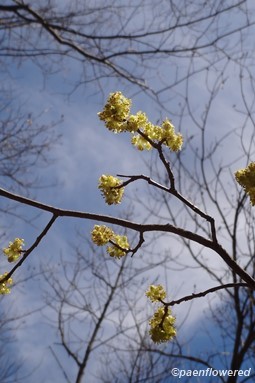Lindera benzoin
A shrub bearing bunches of small yellow-green flowers in early spring
Lindera benzoin northern spicebush
Tall, multi-stemmed shrub covered with aromatic yellow-green flowers in early spring. The leaves emerge about a month after the flowers, around early May. Male and female flowers are borne on different shrubs. The leaves of spicebush are the main source of food for swallowtail butterfly caterpillars. Light green leaves become bright yellow in the fall, and when the female plants produce fruits, they provide food for various birds.
Habitat & Range
Grows in moist areas, such as floodplains, shores of rivers, streams, and lakes.
Present throughout the state.
Range: From sountern Ontario and Maine south to Florida, west to Kansas and Texas.
| EMP: | FAC |
|---|---|
| NCNE: | FACW |
Phenology
Flowers late March to early May.
Leaves appear in May (about a month after flowers).
Fruits July to October.
Characteristics
Plant Codes
S-rank: S5 (Secure)
G-rank: G5 (Secure)
Ecology
Berries are eaten by many birds such as robin, bluebird and vireos. White-tail deer and rabbits browse on the leaves and squirrel and racoon eat the berries.
Leaves are also the main source of food for swallowtail butterfly caterpillars.









Comments
Have you spotted this plant in your area? We'd love to hear about your experience! Share your comments or questions about the plant below. Comments are moderated before posting.